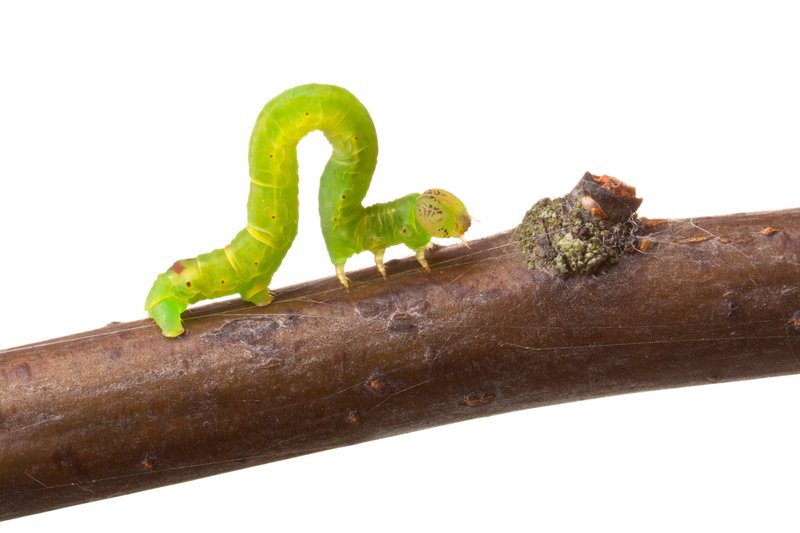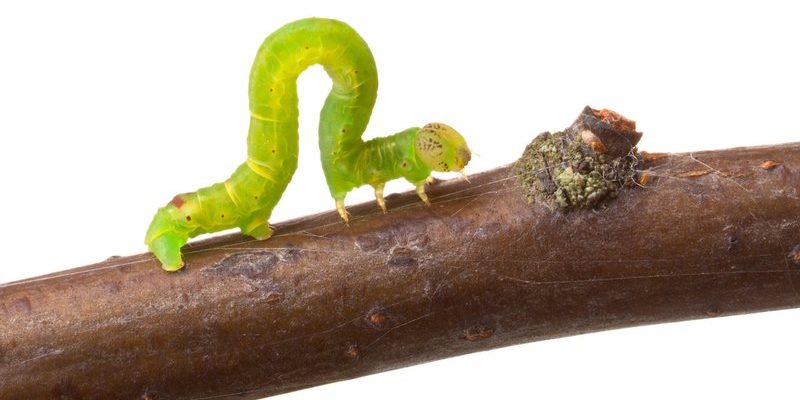
Let’s take a step back and think about what inchworms need to survive—things like food, moisture, and a bit of space. Imagine trying to live in a place that doesn’t have what you need to eat or drink. It’s a tough situation. To figure out if these little guys can make it indoors, we’ll explore their habitat preferences, dietary needs, and what happens when they’re taken out of their natural environment.
Understanding Inchworms and Their Habitat
Inchworms, also known as measuring worms, are the larvae of various moth species, including those from the Geometridae family. They’re famous for their unique movement, which resembles measuring their distance as they crawl along branches and leaves. This movement style helps them evade predators while they munch on greenery.
In the wild, inchworms typically thrive in forests, gardens, and areas with plenty of foliage. They love places where they can find their favorite food—leaves from trees and shrubs. But what happens if they’re suddenly plucked from that environment and dropped into a cozy living room?
The Challenges of Indoor Life
First, it’s essential to recognize that inchworms are not designed for indoor living. Even if you provide them with some leaves and moisture, the conditions inside your home can be vastly different from their natural habitat. For starters, homes usually lack the humidity and temperature fluctuations that inchworms experience outside.
One major challenge is access to food. In the wild, inchworms are surrounded by a buffet of leaves. Indoors, you might think you can just pop a few leaves in their enclosure, but it’s not that simple. Many houseplants are toxic to inchworms, so making sure they have safe food is crucial. If their food source runs out or isn’t suitable, their chances of survival drop significantly.
Dietary Needs of Inchworms
Let’s talk about what inchworms eat because that’s a big piece of the puzzle. These critters primarily eat leaves, and they have specific preferences depending on their species. Some will munch on oak, while others prefer birch or cherry leaves.
When you’re keeping inchworms indoors, you need to ensure they have access to fresh, safe leaves. Here are some options you might consider:
- Oak leaves
- Maple leaves
- Cherry leaves
It’s also important to change their food regularly. Inchworms can be picky eaters, and spoiled leaves can lead to health problems.
Water Needs and Humidity
Inchworms also need humidity to thrive, which is often lacking indoors. They absorb moisture through their skin, so keeping the humidity levels up is essential. A simple way to do this is by lightly misting their enclosure with water every few days.
Without proper humidity, you could run into problems like dehydration, which can quickly lead to the inchworm’s demise. So, while it might seem simple to just provide leaves, the truth is that these little guys require a delicate balance of food, moisture, and environment to live well.
Stress Factors and Their Effects
Taking inchworms out of their natural environment can be stressful for them. Just like you might feel a bit out of sorts in a new place, inchworms can experience similar anxiety. Stress can lead to weakened immune systems, making them more susceptible to diseases or pests.
In an indoor setting, they might not have enough space to move around or even to spin their cocoons. This can impact their growth and development. If you plan on keeping inchworms indoors, it’s crucial to create a habitat that mimics their natural conditions as closely as possible.
Setting Up a Suitable Habitat
Creating a suitable habitat for inchworms indoors requires a bit of thought. Here’s a basic setup to help them feel more at home:
- Container: Use a small terrarium or a breathable container to house them.
- Substrate: Add some damp soil or paper towels to help retain moisture.
- Ventilation: Ensure the container has proper ventilation to prevent mold.
- Temperature: Keep the habitat in a cool, shaded area away from direct sunlight.
By paying attention to these details, you can help your inchworms thrive indoors—though they may still prefer to be outside in the natural world.
So, can inchworms survive in indoor environments? The short answer is maybe, but with a lot of effort on your part. These critters face a ton of challenges outside their natural habitat, including issues with food access, humidity, and potential stress factors. While it’s possible to create a temporary home for them with the right conditions, they’re definitely not suited to a long-term indoor life.
If you find an inchworm, consider returning it to its natural environment where it can munch on tasty leaves and wiggle its way along branches freely. After all, nature is where these little guys thrive best—a place where they can be inching around, living their best life.

